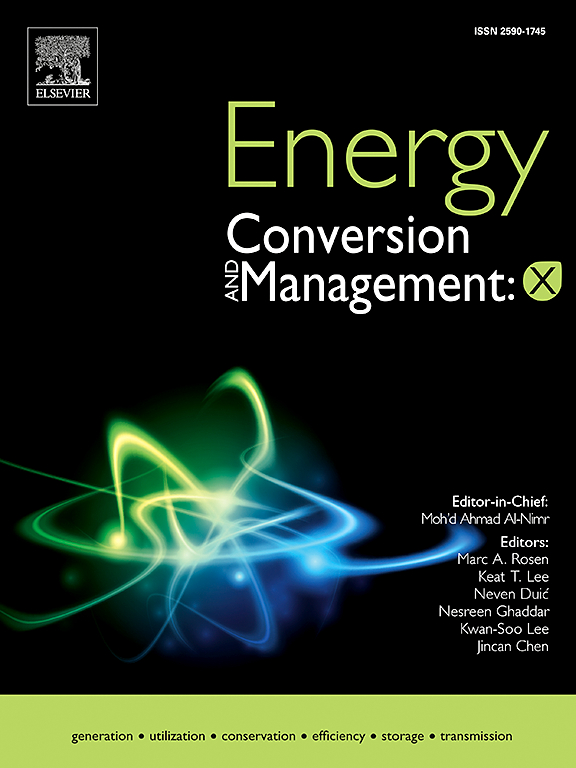Energy harvesting from radial electro-hydraulic actuators in tracked armored vehicle suspensions under thermal constraints
IF 7.6
Q1 ENERGY & FUELS
引用次数: 0
Abstract
The electro-hydraulic energy-harvesting suspension system is crucial for enhancing the mobility and firing accuracy of tracked armored vehicles. However, its application is constrained by limited structural space and thermal loss issues. This paper designs an energy-harvesting suspension system based on radial electro-hydraulic actuators without a hydraulic rectifier bridge, addressing the challenge of integrating high-efficiency energy recovery with thermal management. A linear weighted fusion method is proposed to integrate efficiency and thermal loss power matrices, enabling a low-loss, high-efficiency vibration energy recovery strategy. Model predictive control (MPC) is employed to implement the strategy in tracked armored vehicle suspensions. Experimental results under sinusoidal excitation show that the system achieves a maximum energy recovery efficiency of 54.6 % (average: 35.8 %) and reduces REHA temperature by 2.5 °C, demonstrating its potential to advance REHA applications in space-constrained military vehicles.
热约束下履带式装甲车辆悬架径向电液致动器能量收集
电液能量收集悬架系统是提高履带式装甲车机动性和射击精度的关键。然而,它的应用受到有限的结构空间和热损失问题的限制。本文设计了一种基于径向电液执行器的无液压整流桥能量收集悬架系统,解决了高效能量回收与热管理相结合的难题。提出了一种线性加权融合方法,将效率和热损耗功率矩阵相结合,实现了低损耗、高效率的振动能量回收策略。采用模型预测控制(MPC)实现履带式装甲车辆悬架控制策略。正弦激励下的实验结果表明,该系统实现了54.6%(平均35.8%)的最大能量回收效率,并将REHA温度降低了2.5°C,显示了其在空间受限军用车辆上推进REHA应用的潜力。
本文章由计算机程序翻译,如有差异,请以英文原文为准。
求助全文
约1分钟内获得全文
求助全文
来源期刊

Energy Conversion and Management-X
Multiple-
CiteScore
8.80
自引率
3.20%
发文量
180
审稿时长
58 days
期刊介绍:
Energy Conversion and Management: X is the open access extension of the reputable journal Energy Conversion and Management, serving as a platform for interdisciplinary research on a wide array of critical energy subjects. The journal is dedicated to publishing original contributions and in-depth technical review articles that present groundbreaking research on topics spanning energy generation, utilization, conversion, storage, transmission, conservation, management, and sustainability.
The scope of Energy Conversion and Management: X encompasses various forms of energy, including mechanical, thermal, nuclear, chemical, electromagnetic, magnetic, and electric energy. It addresses all known energy resources, highlighting both conventional sources like fossil fuels and nuclear power, as well as renewable resources such as solar, biomass, hydro, wind, geothermal, and ocean energy.
 求助内容:
求助内容: 应助结果提醒方式:
应助结果提醒方式:


